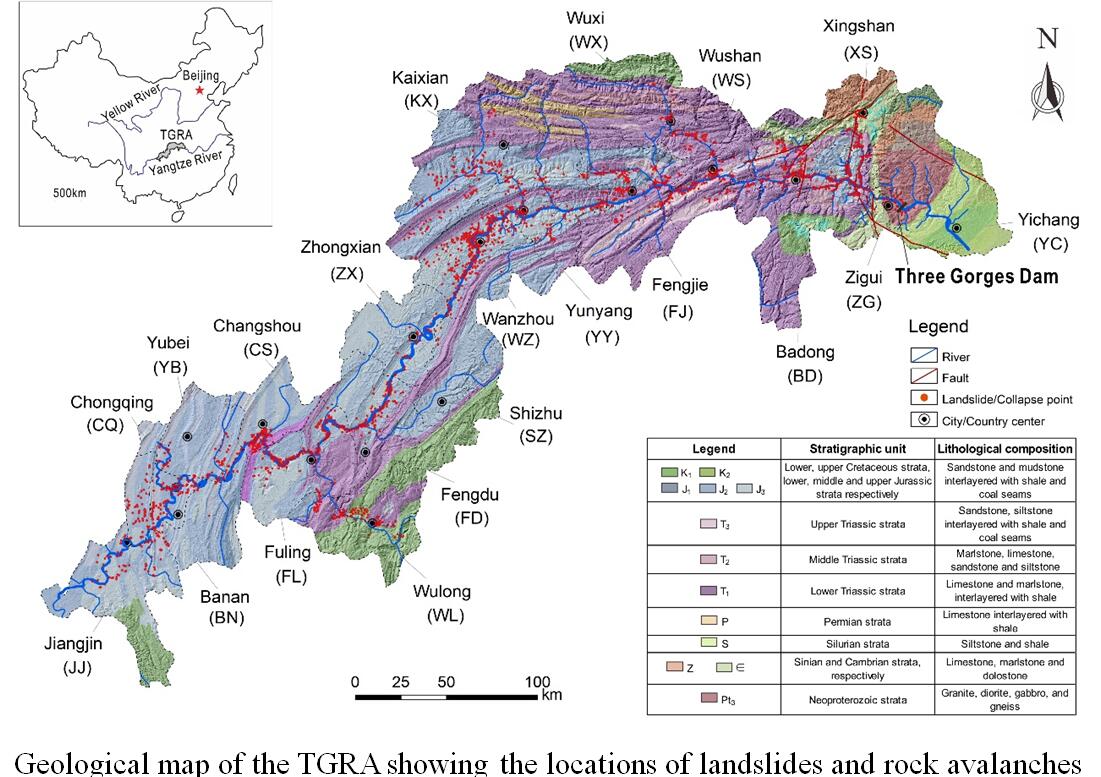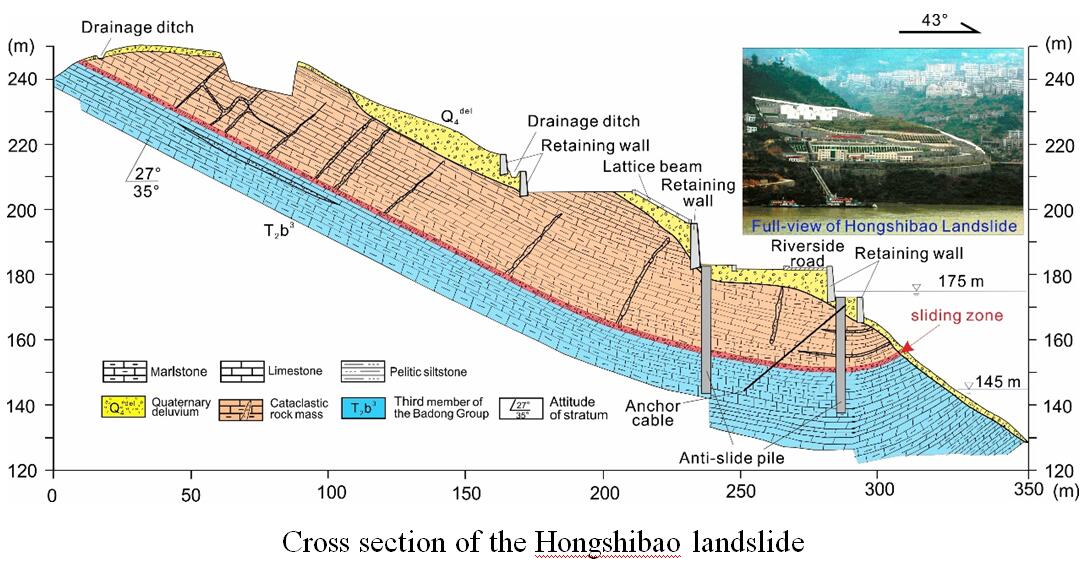Geo-hazards in the Three Gorges Reservoir Area – Lessons Learned from Decades of Research
Huiming Tang, Janusz Wasowski, C. Hsein Juang. Geo-hazards in the Three Gorges Reservoir Area – Lessons Learned from Decades of Research. Engineering Geology, 2019. https://doi.org/10.1016/j.enggeo.2019.105267
Abstract
The impoundment of the 660-km long reservoir behind the huge Three Gorges Dam, the world’s largest hydropower station, increased regional seismicity and reactivated severe geo-hazards. Before the reservoir filling was initiated in 2003, the region had approximately two earthquakes per year with magnitudes between 3.0 and 4.9; after the full impoundment in 2008, approximately 14 earthquakes per year occurred with magnitudes between 3.0 and 5.4. In addition, hundreds of landslides were reactivated and are now in a state of intermittent creep. Many landslides exhibit step-like annual pattern of displacement in response to quasi-regular variations in seasonal rainfall and reservoir level. Additional problems include rock avalanches, impulse waves and debris flows. The seriousness of these events motivated numerous studies that resulted in 1) Better insight into the behavior and evolution mechanism of geo-hazards in the Three Gorges Reservoir Area (TGRA); 2) Implementation of monitoring and early-warning systems of geo-hazards; and 3) Design and construction of preventive countermeasures including lattice anchors, stabilizing piles, rock bolts, drainage canals and tunnels, and huge revetments. This paper reviews the hydro-geologic setting of TGRA geo-hazards, examines their occurrence and evolution in the past few decades, offers insight learned from extensive research on TGRA geo-hazards, and suggests topics for future research to address the remaining challenges.
Keywords: Geo-hazard, landslide, earthquake, hazard mitigation, Three Gorges Reservoir.



